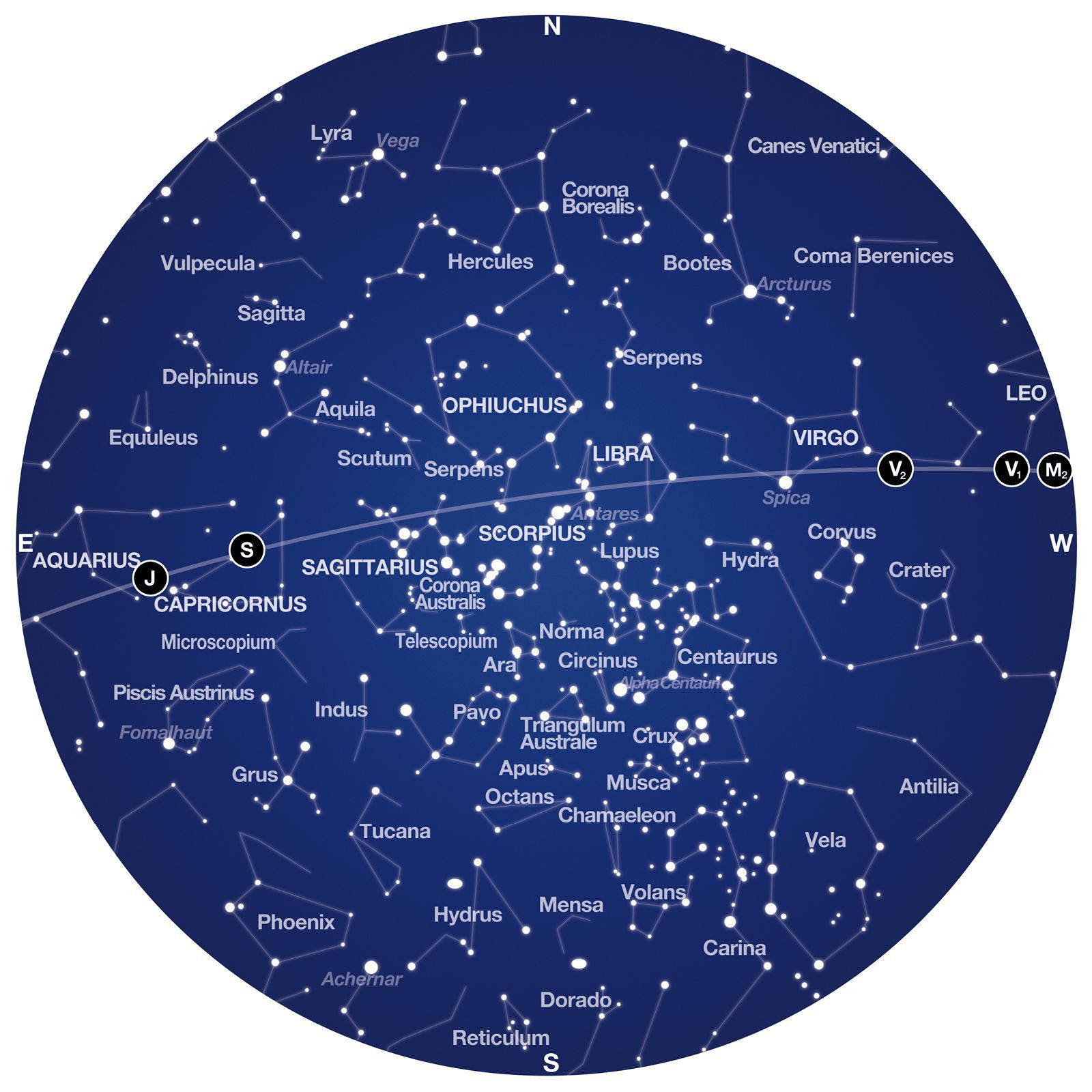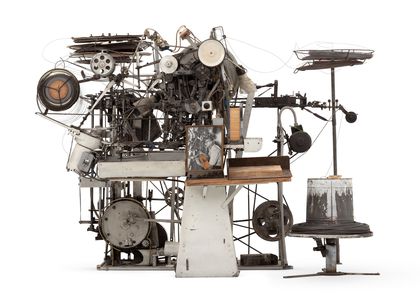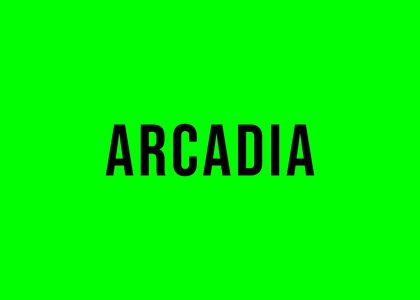
What’s in the sky this August?
Constellations
Constellations are groups of stars that form a picture. These pictures were given names and for millennia have been used as a tool for navigation and to share significant cultural stories. Astronomers use these constellations to delineate portions of the sky and as a way for locating astronomical objects. In August the following constellations dominate the winter sky:
- Scorpius – high overhead in the winter sky is Scorpius the Scorpion. The Scorpion is one of the easiest constellations to pick out as it is one of the few that does look like what it’s supposed to represent. Look for the Scorpion’s heart, the red supergiant star Antares, and follow the body along to the hooked tail and sting. The Scorpion plays a role in many myths, however it is best known in Greek mythology for its pursuit of Orion through the night sky.
- Sagittarius – located just behind the sting of Scorpius is the centaur Sagittarius, sometimes referred to as ‘The Archer’. However, this constellation looks more like a teapot than an archer. In Greek mythology, the archer is a centaur, pointing his arrow towards the heart of Scorpius.
- Ophiuchus – an ancient constellation said to represent the mythical healer Aesculapius. It is now the thirteenth zodiac sign with the Sun, Moon and planets passing through it – the Sun from 30 November to the 17 December.
- Libra – to the west of Scorpius is Libra the Scales. In the past Libra was part of Scorpius, forming the scorpion’s claws however it was the Romans that separated Scorpius into the two distinct constellations we are familiar with today. The former association of Libra and Scorpius is reflected in the names of the two brightest stars in Libra – Zubenelgenubi and Zubeneschamali meaning the ‘southern claw’ and the ‘northern claw’ respectively.
- Southern Cross (Crux) and the Pointer Stars – slightly to the west of south, you will see the Pointers – Alpha and Beta Centauri. Follow the line of the Pointers down towards the southwest and there is the constellation Crux, better known to us as the Southern Cross.
- Centaurus – surrounding the Southern Cross on three sides is Centaurus, the Centaur, said to represent the scholarly Chiron, tutor of many of the Greek gods and heroes. The Pointer Stars make up the front legs of the centaur.
Planets
Jupiter, Saturn and Venus are in the evening sky with Mercury and Mars low in the west after sunset in the evening twilight.
- Mercury – is low in the western sky after sunset in the constellation of Leo and moves into Virgo towards the end of the month. On the 19th, Mercury and Mars will be close together in the evening twilight sky with only 0.2 degrees separating the two planets.
- Venus – is in the western sky and moves from the constellation Leo into Virgo in the second week of the month. On the 11th, a thin crescent Moon is below and to the right (north) of Venus.
- Mars – the red planet is low in the western evening sky after sunset in the constellation Leo, and will disappear from view by month’s end. On the 10th, a thin crescent Moon will be to the right (north) of Mars.
- Jupiter – the largest planet in our Solar System is low in the eastern sky after sunset in the constellation Aquarius. On the 20th, Jupiter reaches opposition and will be at its brightest for the year, and on the 22nd, the full Moon is below and to the right (south) of the gas giant.
- Saturn – the ringed planet is in the eastern sky after sunset in the constellation Capricornus. On the 2nd, Saturn reaches opposition and is at its brightest for the year. The almost full Moon is close to Saturn on the 20th and 21st. On the 20th the Moon is almost directly above and slightly to the right (south) of Saturn and on the 21st the Moon is below and to the right (south).
Moon
For the monthly movements of the Moon, check out our Moon Phase Calendar.
Deep Sky
Explore the universe through binoculars or a telescope and take in these gems of the August sky:
- The Jewel Box (NGC 4755) – is an open star cluster approximately 10 million years old. It is close to Beta Crucis (Mimosa), the second brightest star in the Southern Cross and in binoculars and small telescopes appears as an ‘A’ shape. It is about 20 light years across, consisting of just over 100 stars most of which are blue and include some blue and red supergiants. The Jewel Box is one of the youngest open clusters in our skies with and estimated age of approximately 14 million years. It lies about 6,400 light years from us.
- Alpha Centauri – a triple star system consisting of Alpha Centauri A and B and the closest star to our Sun, Proxima Centauri (Alpha Centauri C) at 4.2 light-years away. Proxima Centauri is a red dwarf star, only visible through large telescopes, and revolves around the other two stars once every 550,000 years. Two planets have been confirmed in orbit around Proxima, Proxima b and Proxima c. Proxima b is an Earth-mass planet discovered in 2016 located within the habitable zone of Proxima Centauri, while Proxima c is a super-Earth exoplanet orbiting the star once every 1,097 days.
- Omega Centauri (NGC 5139) – is the brightest and largest globular cluster in the sky. It is so bright that it was labelled as a star on early sky charts by Ptolemy and is one of the few objects in the sky that carries both a star designation and an object catalogue designation. Omega Centauri shines with the luminosity of a million suns and is relatively close to us, only 15,800 light years away. It contains about 10 million stars and some theories suggest it could be the remnant core of a galaxy that is merging with our own Milky Way.
- M4 (Messier 4) – the closest globular cluster to Earth at a distance of 5,500 light years away. M4 is easy to locate, sitting next to the red supergiant Antares in Scorpius. The cluster contains more than 100,000 stars with approximately 40,000 of these white dwarf stars.
- M6 & M7 (Messier 6 & 7) – these two open star clusters are found below the sting of the Scorpion. M6 is 1,600 light years away and M7, 980 light years from us. See if you can spot the butterfly in M6!
Learn More
- Purchase the 2021 Australasian Sky Guide by Dr Nick Lomb, featuring an annual report of what’s in the sky and the latest astronomical findings. Produced by MAAS Media.
- View the August Sky Chart, which shows the stars, constellations and planets visible in the night sky from anywhere in Australia.
- Check out these resources for getting started.



Lovely views over the past few evenings of Jupiter and Venus shining brightly on opposite sides of the early evening sky.
Hello, i noticed you have shown two new moons on Aug 8 and Aug 9. What is the difference between the two please?
Anna, Our Moon phase calendar occasionally does this when events happen around midnight. The New Moon in August 2021 occurs on Sunday August 08 at 11:50pm AEST. The Calendar should show a crescent Moon on Mon Aug 09.